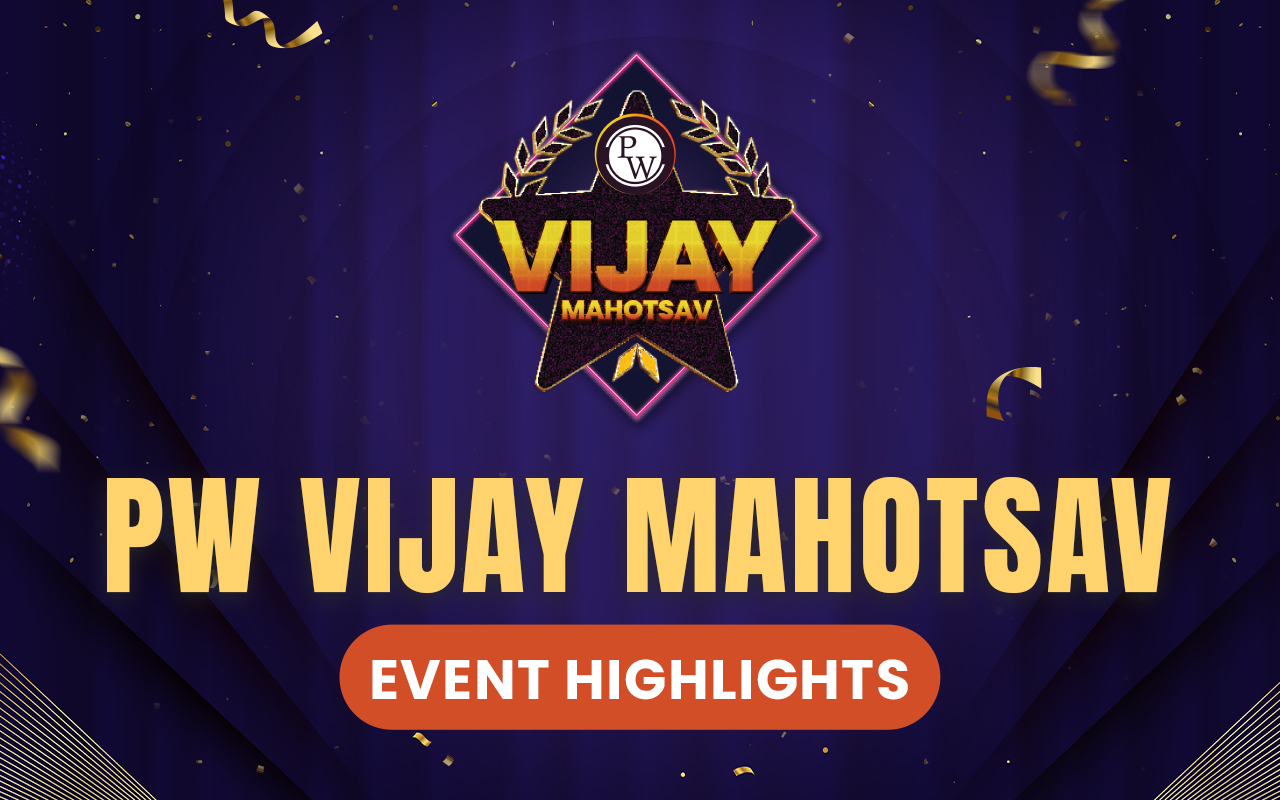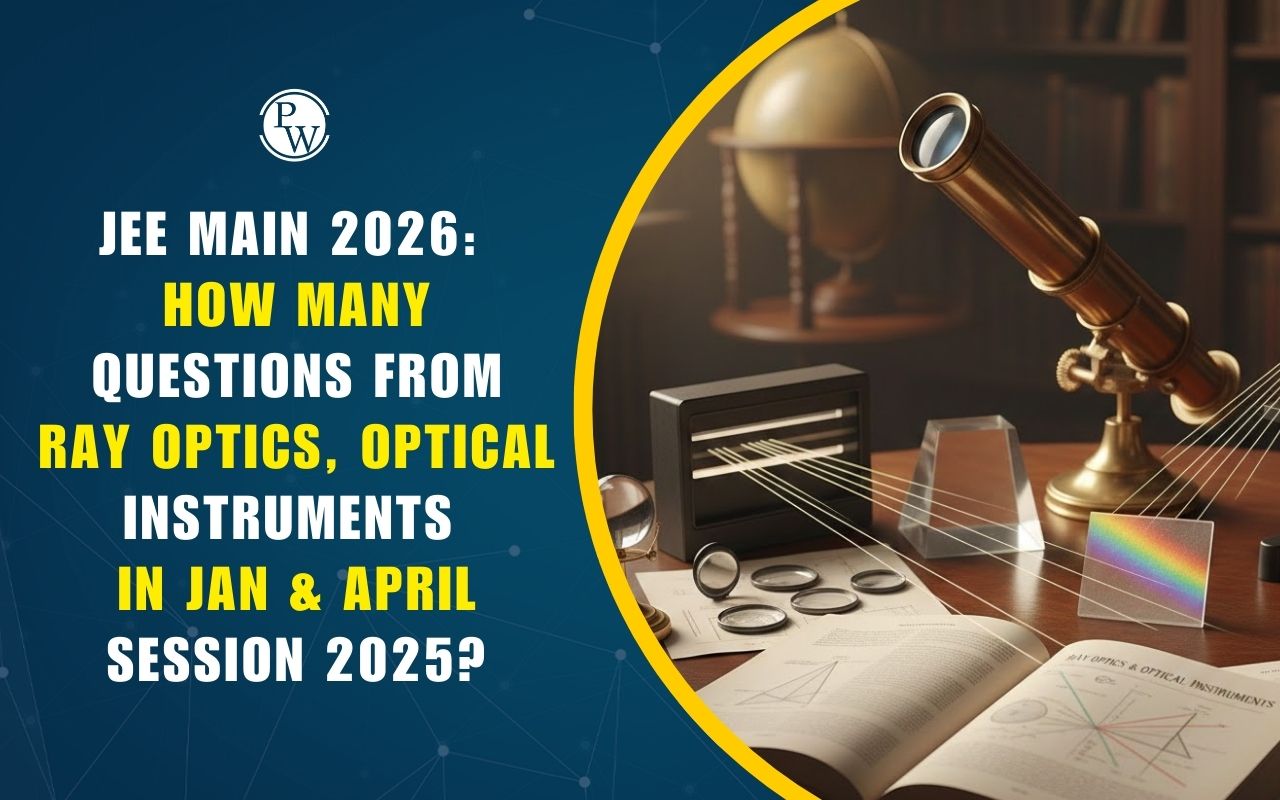
JEE Main Mathematics Sets Relations and Functions : In set theory, Sets, Relations, and Functions are distinct ideas, all crucial for JEE preparation. On this page, you can find questions from past JEE papers related to this topic, each with a detailed solution. These questions cover essential concepts and formulas. In the JEE paper, students may encounter two to three questions from this chapter.
JEE Main Mathematics Sets Relations and Functions Overview
The topic "Relations and Functions" serves as a basic building block in algebra within mathematics. Mathematically, relations and functions carry distinct meanings, which can sometimes cause confusion. In this discussion, we will explore both concepts in depth. Similar to the relations we encounter in our everyday lives, algebra also involves a type of relation. Everyday relations include siblings, friendships, student-teacher connections, and more. Similarly, in mathematics, we observe relations such as the parallel or perpendicular alignment of lines, one variable being greater or less than another, and the subset relationship between Set A and Set B. A common aspect in the study of relations is the need for two different objects to establish a link between them through relations.What is the Meaning of Relation in maths?
Understanding relationships requires basic knowledge of sets. A set is a group of clearly defined objects of a specific kind. For instance, a set of dice outcomes or a set of English alphabet letters.
The study of relationships always involves two sets. If we have two non-empty sets A and B, then the relationship R from set A to set B is denoted by aRb, where a is the set of elements in A, and b belongs to set B.
A relationship from set A to set B is a part of the Cartesian product of A and B, meaning it's a subset of A x B. Alternatively, a relationship can be seen as a collection of ordered pairs (a, b) where a is from set A and b is from set B. The relationship is from A to B, not the other way around.
What Are Sets
Sets serve as the building blocks of mathematical reasoning. In this section, we'll explore their definitions, notations, and various types. A set is a collection of distinct elements. The notation often used is curly brackets, like {1, 2, 3}, where 1, 2, and 3 are elements of the set. Different types of sets exist, including finite, infinite, equal, equivalent, and null sets. Understanding these distinctions is crucial for solving complex JEE Main problems.
Operations on sets, such as union, intersection, and complement, add another layer of complexity. The union of sets A and B, denoted as A
∪
B, includes all elements present in either A or B. The intersection, denoted as A ∩ B, comprises elements common to both sets. The complement of a set A, denoted as A', includes all elements not in A.
What are Functions?
Functions are a unique kind of relationship, or we can describe them as special types of relationships known as Functions. Function is a very important idea in maths because whenever we deal with real-life situations, we first solve and analyse them by expressing them as mathematical equations or functions. Think of a function like a machine that provides a distinct result for each input it receives. However, every machine is made for specific inputs; for instance, a washing machine is made for cleaning clothes, not for handling wood. Similarly, functions are created for specific inputs known as their domain, and the resulting outputs are called the Range.What is the Domain of a Function?
In a relation from set A to set B, denoted as aRb, the elements in set A are called the domain of the relation R, and the elements in set B are called the co-domain of the relation R. The range is the set of all second elements from the ordered pairs (a, b) in the relation aRb. For a function f, the domain is the set {a | a ∈ A, (a, f(a)) ∈ f}, and the range is the set {f(a) | a ∈ A, f(a) ∈ B, (a, f(a)) ∈ f}. In the context of a function, the domain represents the inputs, the co-domain signifies the possible outputs, and the range is the actual output. In a function f: A → B, the elements of set A serve as the inputs, while B represents the set of possible outputs. The second elements of the ordered pairs in f(A, B) constitute the actual outputs. It is important to note that the range is a subset of the co-domain. When only the function rule is given, the domain of the function consists of the real numbers where the function is defined. For a continuous function, the range is determined by the interval between the minimum and maximum values of the function.Which is not the Graph of a Function?
To determine if a graph is a function, we need to reconsider its definition in simpler terms related to pictures. The first rule of a function says, "All things from A must be connected to things in B." In a picture, this means that for every starting point in its group, the function should show a matching ending point.
The second rule of a function says, "Things from set A must be linked to things in set B in a unique way." This means that, for any starting point x, there should be only one ending point. A simple way to check this for the function y = f(x) is to draw a line that runs parallel to the y-axis. If this line intersects the graph at two or more separate points, it implies that for one x value, there are multiple y values. Consequently, it fails to be a function.
- Even Function: If we have a real-valued function f(x) with a real variable, it is considered even if the equation f(x) = f(-x) holds true for all x and -x in its domain. Geometrically, the graph of an even function shows symmetry with respect to the y-axis.
- Odd Function: Once again, considering a real-valued function f(x) with a real variable, it is labelled odd if the equation f(-x) = -f(x) or f(x) + f(-x) = 0 holds for all x and -x in its domain.
- Increasing Function: A function f is called increasing if, when a > b, then f(a) = f(b). Additionally, a function is termed strictly increasing if, for a > b, f(a) is greater than f(b).
Classification of Functions
Functions are a fundamental concept in mathematics, and they come in various forms, each serving a unique purpose. Here, we'll explore the classification of functions, highlighting key types without delving into mathematical notations.- Polynomial Function: A polynomial function is a mathematical expression consisting of variables raised to non-negative integer powers, multiplied by coefficients. These functions are algebraic and can take various forms, including linear, quadratic, cubic, and higher-degree polynomials.
- Algebraic Function: Algebraic functions are built from algebraic operations, involving addition, subtraction, multiplication, division, and exponentiation. These functions encompass a wide range of mathematical expressions, including polynomial functions.
- Fractional Rational Function: Fractional rational functions involve the ratio of two polynomials. These functions are expressed as the quotient of two polynomial functions, where both the numerator and denominator are polynomials. They often exhibit interesting properties, such as asymptotes and singularities.
- Exponential Function: These functions model exponential growth or decay and are frequently encountered in natural phenomena, such as population growth, radioactive decay, and compound interest.
- Logarithmic Function: Logarithmic functions are the inverse of exponential functions.
- Absolute Value Function (or Modulus Function): The absolute value function yields the distance of a number from zero on the number line. It disregards the sign of the number, providing its magnitude. This function is crucial in various applications, including distance and optimization problems.
- Signum Function: The signum function, returns the sign of a real number: -1 for negative, 0 for zero, and 1 for positive. It's a piecewise-defined function used in mathematical analysis and signal processing.
- Greatest Integer or Step-up Function: The greatest integer function, assigns the largest integer less than or equal to a given real number. It results in a step-like graph, hence its alternative name, the step-up function.
- Identity Function: The identity function simply returns the input value unchanged. It serves as a baseline for understanding other functions and transformations.
- Constant Function: A constant function is one where the output is the same for every input. These functions produce horizontal lines when graphed.
JEE Main Mathematics Sets Relations and Functions Previously Asked Questions
| JEE Main Mathematics Sets Relations and Functions Previously Asked Questions | |
| Question | Answer |
| Question 1: If A = [(x, y) : x2 + y2 = 25] and B = [(x, y) : x2 + 9y2 = 144], then A ∩ B contains _______ points. | A = Set of all values (x, y) : x2 + y2 = 25 = 52 B = [x2 / 144] + [y2 / 16] = 1 i.e., [x2 / (12)2] + [y2 / (4)2] = 1. Clearly, A ∩ B consists of four points. |
| Question 2: In a college of 300 students, every student reads 5 newspapers, and every newspaper is read by 60 students. The number of newspapers is ________. | Solution: Let the number of newspapers be x. If every student reads one newspaper, the number of students would be x (60) = 60x Since every student reads 5 newspapers, the number of students = [x * 60] / [5] = 300 x = 25 |
| Question 3: Let R be the relation on the set R of all real numbers defined by a R b if and only if |a − b| ≤ 1. Then R is __________. | a − a| = 0 < 1 Therefore, a R a ∀ a ∈ R Therefore, R is reflexive. Again a R b, |a − b| ≤ 1 ⇒ |b − a| ≤ 1 ⇒ b R a Therefore, R is symmetric. Again 1 R [½] and [½] R1 but [½] ≠ 1 Therefore, R is not anti-symmetric. Further, 1 R 2 and 2 R 3, but 1 R 3 is not possible, [Because, |1 − 3| = 2 > 1] Hence, R is not transitive. |
| Question 4: Let a relation R be defined by R = {(4, 5); (1, 4); (4, 6); (7, 6); (3, 7)} then R−1 o R is ________. | First, find R−1. R−1 = {(5, 4) ; (4, 1) ; (6, 4) ; (6, 7) ; (7, 3)}. Obtain the elements of R−1 o R. Pick the element of R and then of R−1. Since (4, 5) ∈ R and (5, 4) ∈ R−1, we have (4, 4) ∈ R−1 o R Similarly, (1, 4) ∈ R, (4, 1) ∈ R−1 ⇒ (1, 1) ∈ R−1 o R (4, 6) ∈ R, (6, 4) ∈ R−1 ⇒ (4, 4) ∈ R−1 o R, (4, 6) ∈ R, (6, 7) ∈ R−1 ⇒ (4, 7) ∈ R−1 o R (7, 6) ∈ R, (6, 4) ∈ R−1 ⇒ (7, 4) ∈ R−1 o R, (7, 6) ∈ R, (6, 7) ∈ R−1 ⇒ (7, 7) ∈ R−1 o R (3, 7) ∈ R, (7, 3) ∈ R−1 ⇒ (3, 3) ∈ R−1 o R, Hence, R−1 o R = {(1, 1); (4, 4); (4, 7); (7, 4), (7, 7); (3, 3)}. |
| Question 5: If f (x) = cos (log x), then find the value of f (x) * f (4) − [1 / 2] * [f (x / 4) + f (4x)]. | f (x) = cos (log x) Let y = f (x) * f (4) − [1 / 2] * [f (x / 4) + f (4x)] y = cos (log x) * cos (log 4) − [1 / 2] * [cos log (x / 4) + cos (log 4x)] y = cos (log x) cos (log 4) − [1 / 2] * [cos (log x −log 4) + cos (log x + log 4)] y = cos (log x) cos (log 4) − [1 / 2] * [2 cos (log x) cos (log 4)] y = 0 |
| Question 6: Let f : R → R be defined by f (x) = 2x + |x|, then f (2x) + f (−x) − f (x) = _______. | f(x) = 2x + |x| f(2x) = 2(2x) + |2x| = 4x + 2|x| f(-x) = -2x + |-x| = -2x + |x| -f(x) = -2x + (-|x|) = -2x – |x| Hence, f(2x) + f(-x) – f(x) = 4x + 2|x| – 2x + |x| – 2x – |x| = 2|x| = 2x; x ≥ 0 and -2x; x < 0 |
| Question 7: If f (x) = cos [π2] x + cos[−π2] x, where [x] stands for the greatest integer function, then find the function of the right angle. | f (x) = cos [π2] x + cos[−π2] x f (x) = cos (9x) + cos (−10x) {since π = 3.14} = cos (9x) + cos (10x) = 2 cos (19x / 2) cos (x / 2) Now, right angle = π/2 So, f (π / 2) = 2 cos (19π / 4) cos (π / 4) f (π / 2) = 2 *(−1 / √2) * (1/ √2) = −1 |
| Question 8: The function f : R → R defined by f (x) = ex is ________. | Function f: R → R is defined by f (x) = ex. Let x1, x2 ∈ R and f (x1) = f (x2) or ex1 = ex2 or x1 = x2. Therefore, f is one-one. Let f (x) = ex = y. Taking log on both sides, we get x = log y. As we know, negative real numbers have no pre-image, or the function is not onto, and zero is not the image of any real number. Therefore, function f is one-one and into. |
| Question 9: If f: R → S defined by f (x) = sin x − √3 cos x + 1 is onto, then what is the interval of S? | Given, f (x) = sin x − √3 cos x + 1 As we know, the range of the function f(x) = a cos x + b sin x + c is given by: c – √(a2 + b2) ≤ f(x) ≤ c + √(a2 + b2) − √[1 + (√−3)2] ≤ (sin x − √3 cos x) ≤ √[1 + (√−3)2] −2 ≤ (sin x − √3 cos x) ≤ 2 −2 + 1 ≤ (sin x − √3 cos x + 1) ≤ 2 + 1 −1 ≤ (sin x − √3 cos x + 1) ≤ 3 i.e., range = [−1, 3] For f to be onto, the interval of S = [−1, 3]. |
| Question 10: If f (x) = a cos (bx + c) + d, then what is the range of f (x)? | f (x) = a cos (bx + c) + d ..(i) As we know, -1 ≤ cos θ ≤ 1 For minimum, cos (bx + c) = −1 From (i), f (x) = −a + d = (d − a) For maximum, cos (bx + c) = 1 From (i), f (x) = a + d = (d + a) Range of f (x) = [d − a, d + a] Alternatively, -1 ≤ cos(bx + c) ≤1 -a ≤ a cos(bx + c) ≤ a -a + d ≤ a cos(bx + c) + d ≤ a + d Range of f(x) = [d – a, a + d] |
| Question 11: The function f: R → R is defined by f (x) = cos2 x + sin4x for x ∈ R, then what is f (R)? | f (x) = cos2 x + sin4x y = f (x) = cos2 x + sin2x (1 − cos2x) y = cos2 x + sin2x − sin2x cos2x y = 1 − sin2x cos2x y = 1 − [1 / 4] * [sin22x] 3 / 4 ≤ f (x) ≤ 1, (Because 0 ≤ sin22x ≤ 1) f (R) ∈ [3/4, 1] |
The Significance of JEE Main Mathematics Sets Relations and Functions Notes for JEE Main 2024
The chapter on 'Sets, Relations, and Functions' delves into maths ideas connected to sets, how they relate, and the functional links among them. Here are a few important aspects of this section:Step into the World of Sets
Explore the magic of sets, the basic elements of mathematical wonders! Picture arranging things into tidy groups - that's what sets are all about! They work like special boxes where things with similar characteristics gather. Whether it's basic numbers or tricky ideas, sets create the base for your adventure ahead.Connecting with Relations
Prepare to explore the world of relationships! Similar to how friendships connect individuals, relationships link elements from various sets. Delve into how they form connections, whether it's friends on a social network or temperatures on different days. Relationships breathe life into patterns and correlations, unveiling opportunities for fresh perspectives.Playing with Functions
Meet the maths superheroes – functions! They act like wizards changing inputs into outputs. Think of a gadget turning your preferred ingredients into a tasty dish – that's a function! Functions are all around us, figuring out speeds to create graphs. They're like tools helping you unravel mysteries in the real world.Interactive Learning Zone
Sets Sorcery: Take part in enjoyable challenges where you organise vibrant items into sets. Be amazed by the wonder of set actions like joining and meeting. Ready for the set-matching game? It's time to welcome the set adventure.Why Explore this Chapter?
- Boosting Your Brain: Sets, relations, and functions improve your logical thinking and problem-solving abilities, not only for JEE Main but for life in general.
- Practical Importance: Grasping relationships and functions aids in interpreting data, making predictions, and understanding the world.
- Visual Understanding: Functions become vivid on graphs. They act as visual storytellers, uncovering trends and insights that numbers alone cannot show.
Study Tips for Success
- Participate: Get involved with the material using games, puzzles, and real-life situations.
- Apply: Work on different problems to gain confidence and skill.
- Link: Connect sets, relations, and functions to everyday situations for a clearer grasp.
Strategic Approach : Maximising Learning with Formulas and Revision Notes
To learn well, you can adopt a clever approach by bringing together formulas and review notes. These two elements complement each other effectively. Formulas act as brief summaries of crucial concepts. When paired with thorough review notes, they provide a comprehensive learning method. Review notes establish a sturdy foundation, and formulas enhance your understanding and problem-solving skills. This combination simplifies challenging topics and enhances your memory. By applying this approach, you can enhance your comprehension and perform better in your studies.- Obtain the JEE Main Mathematics Formulas. Merge them with JEE Main Notes, and you will observe positive improvements in your scores.
- Additional Materials for JEE Main 2024 Sets, Relations, and Functions.
Delve into these crucial resources:
- Practice Papers: Improve your abilities with focused practice.
- MockTests: Simulate exam situations and increase your self-assurance.
- Sample Papers: Get used to the question formats.
- Previous Year Question Papers (PYQPs): Understand the exam's format and tendencies.
JEE Main Mathematics Sets Relations and Functions FAQs
🔥 Trending Blogs
Talk to a counsellorHave doubts? Our support team will be happy to assist you!

Check out these Related Articles
Free Learning Resources
PW Books
Notes (Class 10-12)
PW Study Materials
Notes (Class 6-9)
Ncert Solutions
Govt Exams
Class 6th to 12th Online Courses
Govt Job Exams Courses
UPSC Coaching
Defence Exam Coaching
Gate Exam Coaching
Other Exams
Know about Physics Wallah
Physics Wallah is an Indian edtech platform that provides accessible & comprehensive learning experiences to students from Class 6th to postgraduate level. We also provide extensive NCERT solutions, sample paper, NEET, JEE Mains, BITSAT previous year papers & more such resources to students. Physics Wallah also caters to over 3.5 million registered students and over 78 lakh+ Youtube subscribers with 4.8 rating on its app.
We Stand Out because
We provide students with intensive courses with India’s qualified & experienced faculties & mentors. PW strives to make the learning experience comprehensive and accessible for students of all sections of society. We believe in empowering every single student who couldn't dream of a good career in engineering and medical field earlier.
Our Key Focus Areas
Physics Wallah's main focus is to make the learning experience as economical as possible for all students. With our affordable courses like Lakshya, Udaan and Arjuna and many others, we have been able to provide a platform for lakhs of aspirants. From providing Chemistry, Maths, Physics formula to giving e-books of eminent authors like RD Sharma, RS Aggarwal and Lakhmir Singh, PW focuses on every single student's need for preparation.
What Makes Us Different
Physics Wallah strives to develop a comprehensive pedagogical structure for students, where they get a state-of-the-art learning experience with study material and resources. Apart from catering students preparing for JEE Mains and NEET, PW also provides study material for each state board like Uttar Pradesh, Bihar, and others
Copyright © 2025 Physicswallah Limited All rights reserved.
Get App









